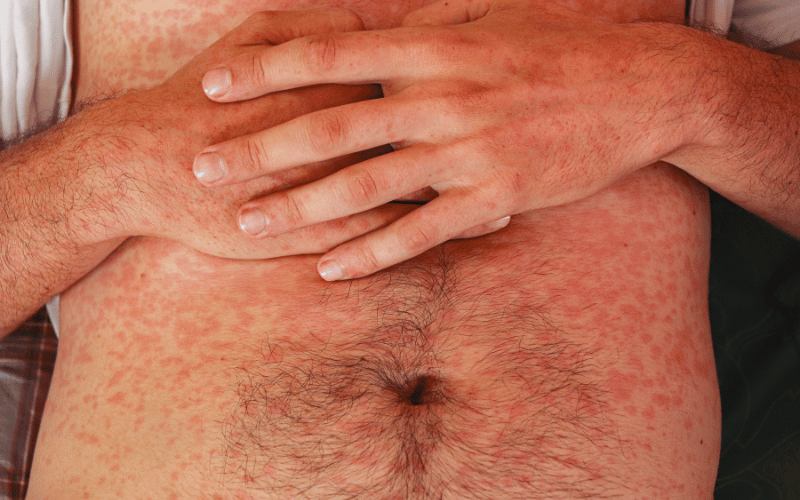ntroduction: Navigating the Complexities of Scarlet Fever in Adults
Scarlet fever, a condition more commonly associated with childhood, presents unique challenges when it appears in adults. This introduction seeks to shed light on the essential aspects of scarlet fever, or scarlatina, as it manifests in the adult population. Understanding its symptoms, causes, and treatment options is crucial for effective management and recovery.

Traditionally viewed as a pediatric ailment, scarlet fever can indeed affect adults, albeit less frequently. It’s caused by the same bacteria responsible for strep throat, Group A Streptococcus. What sets scarlet fever apart is the distinctive rash, prompted by a toxin released by these bacteria. This intersection of bacteriology and symptomatology forms the basis of understanding the condition in adults.
Adults with scarlet fever typically experience a constellation of symptoms, some mirroring those in children and others unique to the adult physiology. The characteristic fine, red rash, often feeling like sandpaper, is the most recognizable sign. Accompanying this rash are other symptoms like a high fever, sore throat, and the distinctive strawberry tongue, where the tongue becomes red and bumpy.
Treatment for scarlet fever in adults typically involves a course of antibiotics, with penicillin being the standard. This treatment not only helps in alleviating symptoms but also in preventing the aforementioned complications. It’s important for adults to complete the entire course of antibiotics, even if symptoms improve before the medication is finished.
As we delve deeper into the specifics of scarlet fever in adults, this introduction sets the stage for a detailed exploration of its implications. The following sections will further dissect the symptoms, treatment, and prevention strategies, aiming to provide a thorough understanding of this condition as it affects the adult population.
1. The Distinctive Rash: Scarlet Fever’s Hallmark

In adults, the rash of scarlet fever often starts as a small, reddish area, usually in the neck, underarm, or groin region. This early manifestation is crucial for timely diagnosis.
The rash rapidly spreads over the body, typically within a day. Its texture is similar to sandpaper, and the color intensifies near folds in the skin.
The rash’s appearance is strikingly red, earning the disease its name. It feels rough to the touch, like fine sandpaper. Adults may notice the rash becomes more pronounced in areas of skin folds, such as under the arms or at the elbows. The skin may also peel around the fingertips, toes, and groin area as the rash progresses.
A key characteristic of the scarlet fever rash is its ability to blanch under pressure. When pressed, the red skin temporarily turns white. This distinguishing feature helps differentiate it from other rashes. The blanching test is a simple yet effective diagnostic tool in initial assessments.
Typically, the rash fades after about a week. However, it may be followed by peeling of the affected skin, especially on the hands and feet. This peeling can last up to several weeks. While the rash itself does not usually leave permanent scars, its intensity and duration can be unsettling for adults experiencing it. (1)